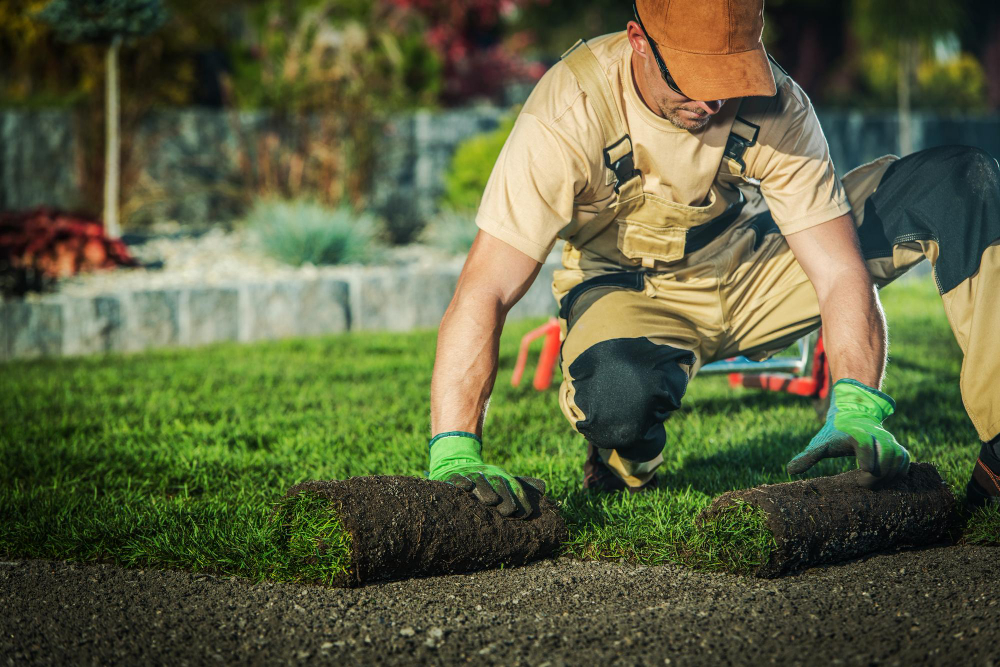A Guide to Reviving Your Drought-stricken Lawn

When your once-verdant landscape starts to resemble a parched desert, it's time for intervention. The kind of intervention that not only revives your lawn but ensures its resilience against the dry days ahead. In this guide, we will explore how to breathe new life into your turf, making it lush, green, and the envy of your neighborhood once more.
The Root of the Problem
Understanding why your lawn is suffering is the first step to recovery. Drought can inflict irreversible damage on grass, but pinpointing the cause enables you to make corrective changes for future prevention. There could be several culprits:
- Insufficient Watering: The most common cause of lawn drought is not watering enough. A regular schedule during dry spells is vital, and the time of day you water can also make a difference.
- High Temperatures: In extreme heat, water evaporates before it can benefit your grass.
- Shallow Roots: If your lawn is not receiving deep watering, its roots won't grow deep enough to reach water in the soil.
- Type of Grass: Certain grasses are more resistant to drought than others. Your choice of grass may not have been suited to your local climate.
Rehydration Strategies
A lawn's thirst can be quite insatiable, especially during a drought. To rehydrate your grass effectively, consider:
- Deep Watering: Rather than frequent, light watering, opt for infrequent sessions that moisten the soil down to 6-8 inches.
- Watering Techniques: Using a sprinkler in the early morning or late evening when evaporation is low can maximize the water your lawn receives.
- Root Stimulants: There are commercial products available that can stimulate root growth and help your grass access deeper water sources.
Sowing Seeds of Change
Reviving a lawn sometimes requires more than just watering. If your grass is beyond rescue, consider reseeding. Here's what you need to know:
- Choosing the Right Seed: Identify the best grass species for your area and your lawn's conditions. Some grasses are specifically bred for drought resistance.
- Preparation: Before sowing, prepare the soil by removing dead grass and weeds, adding compost, and ensuring the area is level.
- Best Practices: Follow recommended seeding rates, lightly rake the seeds into the soil, and keep them moist until they establish.
Nutritional Support
Like any living thing, grass needs nutrients. During a drought, these nutrients can leach from the soil before the grass can absorb them. Fertilizing can be a way to help your lawn recover:
- Selecting Fertilizers: Choose a high-quality, slow-release fertilizer that is designed for the needs of your grass species.
- Application: Apply the fertilizer evenly, and be cautious not to over-fertilize, especially in drought conditions, as this can burn your stressed grass.
- Timing: The best time to fertilize is in the early morning or late afternoon when the grass is not already stressed by high temperatures and can uptake the nutrients.
Professional Intervention
Sometimes, a drought-stricken lawn requires the expertise of professionals. Sod installers can offer a quick and hassle-free solution to a lackluster lawn:
- Consultation: A consultation with a professional can help you decide if sod installation is the right choice for your lawn.
- Professional Installation: Sod installers have the knowledge and equipment to ensure a successful job, which can save you time and energy.
- Post-Installation Care: Professionals can also guide you on how to best care for your new turf to ensure long-term health and vitality.
Laying Down the New Lawn
Orlando, FL, residents can find top-notch sod installers who specialize in the unique challenges of the local climate. If you're considering sod installation, ensure you:
- Select the Best Sod: The sod you choose should be suited to the climate and environment.
- Prepare the Soil: The soil needs to be properly prepared to allow for good root penetration and water drainage.
- Laying Practices: Lay the sod as soon as possible to prevent drying out, keep it well-watered in the following weeks, and avoid heavy use until it has established.
Cultivating Lavish Landscapes through Learning
The best tool in your arsenal is knowledge. Stay informed about your local weather patterns, adopt water-conservation practices, and learn about the needs of your specific lawn species.
By valuing the education that your own lawn can provide, you set the path for sustainable rejuvenation that celebrates the robustness of your garden's foundation.
Cultivate Your Yard's Transformation
A drought-stricken lawn is more than just a tired patch of green. It's a canvas waiting for the brush of health to make it vivid again. With the strategies outlined in this guide, your garden can become a beacon of thriving resilience, an oasis within your Orlando, FL, home. Become your yard's own personal meteorologist, its guardian of hydration, and watch as it repays your care with a verdant welcome, no matter the weather.
If you're looking for sod installers in Orlando, FL for further assistance in restoring your lawn's vitality, reach out to From The Ground Up Landscaping today, where we don't just install sod – we plant the promise of a greener future.